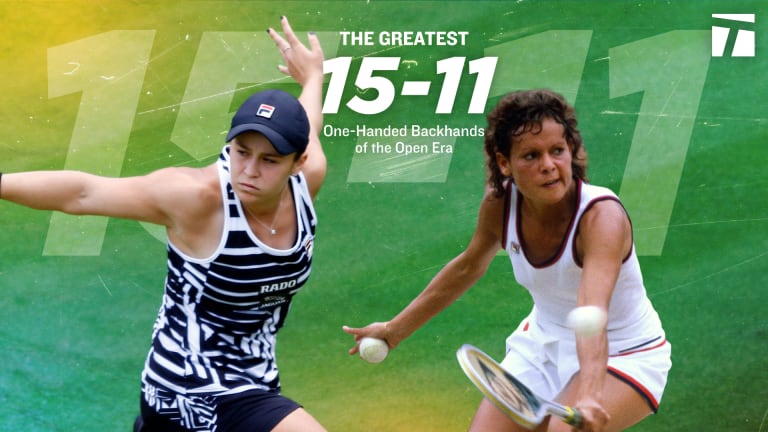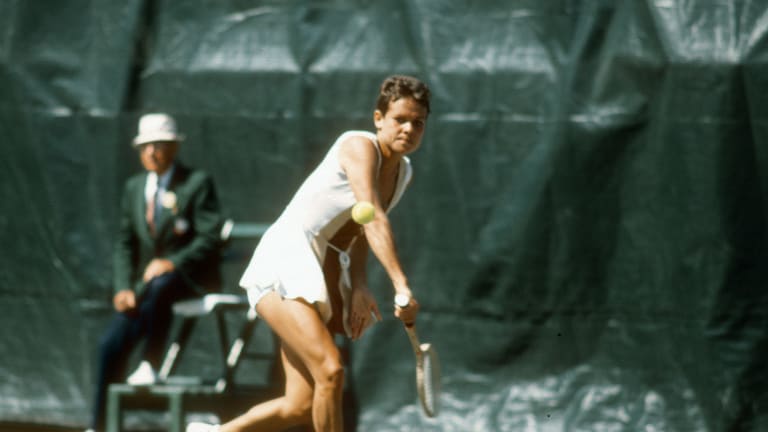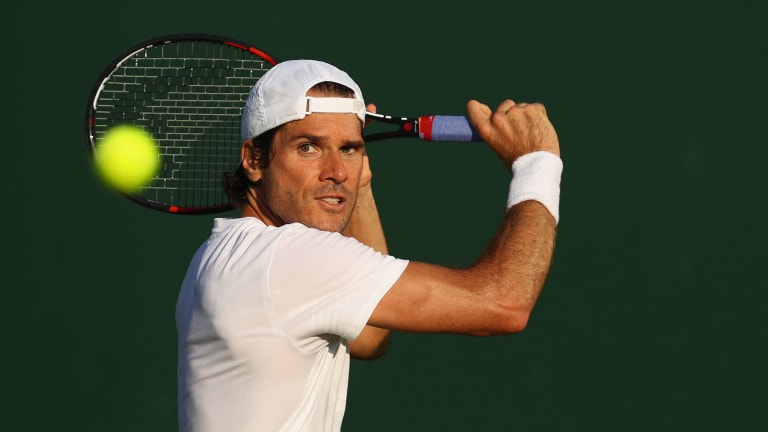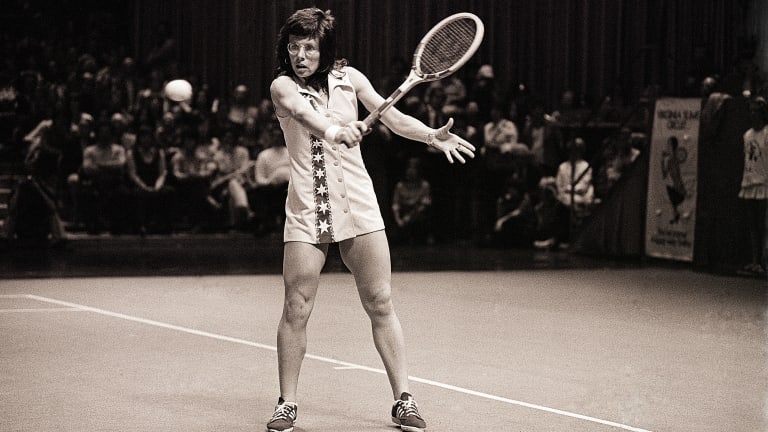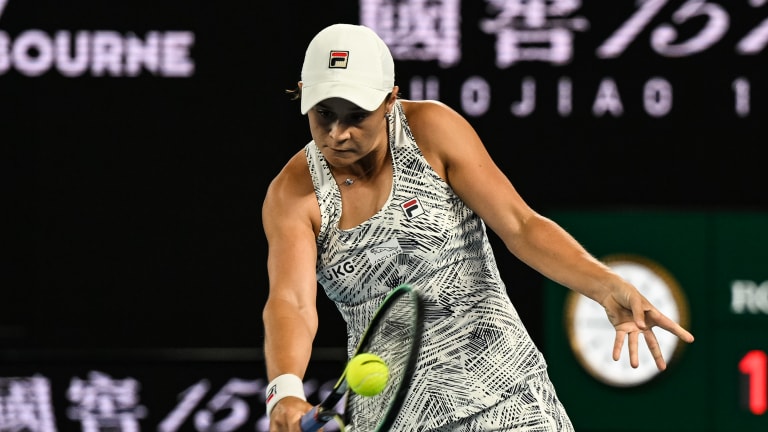In the wake of the news that this week will mark the first in ATP history that no players in the Top 10 possess a one-handed backhand, Tennis.com offers a look back at a 2023 series counting down the 20 most impressive one-handers, and how their combination of beauty and efficiency left their mark on the game.
Our five-part series on The Greatest One-Handed Backhands of the Open Era continues today. Here's the list so far:
- No. 20: Gabriela Sabatini
- No. 19: Dominic Thiem
- No. 18: Amelie Mauresmo
- No. 17: Guillermo Vilas
- No. 16: Gaston Gaudio
Today, we'll reveal backhands 15 through 11; stay tuned for the next installment.
